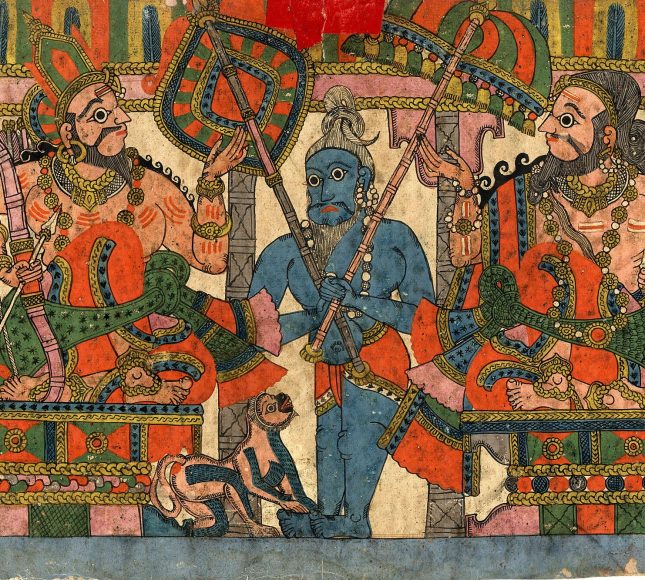JANMEJA (JANAMEJAYA) Janamejaya could not comprehend the Word of the Guru. Having strayed in illusion, how could he attain peace. He erred a little (and afterwards repented). (Gauri M. l, p. 225) The king Janamejaya was being advised by Vyasa (not to ride the horse, not to bring home the Apasaras and not to do any-thing at her bidding), but the king did the same and accepted the proposal of the Apasaras regarding the performance of a Yajna. He invited eighteen Brahmins.
(When the queen arrived wearing transparent clothes, the Brahmins laughed).The king in great ire, killed them, (the king was seized by leprosy) and he could not escape the Destiny. (Prabhati M. l, p. 1344) The king Janamejaya •was the son of Parikshit and grandson of Arjuna. He did not act according to the advice of his Guru Vyasa, who forbade him from riding a particular mare, and sending the horse bom of her for Ashwamedha Yajna. He was also forbidden to marry a very beautiful damsel, who would meet him while hunting in the forest.
He was also told not to perform the Yajna and not invite the Brahmins for performing the rites of the Yajna.He was also cautioned for not killing the invited Brahmins. But whatever was destined had to happen. It is said mat though.the king tried to avoid all the above-mentioned happenings, but the Writ on his head led him towards everything anticipated by Vyasa.
As a result of the killing of the Brahmins, who laughed on seeing the queen in transparent clothes, the king became a leper. In order to save himself from such a grave disease, the king was advised to listen to the Katha (reading) of Mahabharata. This great epic was recited by Vaishampayana and the king listened to it in expiation of the sin of killing Brahmins.
References :
1. Kohli, Surindar Singh (ed), Dictionary of Mythological References in Guru Granth Sahib, 1993
Janamejaya is a prominent figure in Hindu mythology and history, known as a Kuru king and the great-grandson of Arjuna, the Pandava hero from the Mahabharata. His life is intertwined with significant events and themes in Vedic and epic traditions.
Key Aspects of Janamejaya:
Lineage and Reign:
- Janamejaya was the son of Parikshit, who succeeded Yudhishthira as the ruler of Hastinapura. After Parikshit’s death, Janamejaya ascended the throne and played a crucial role in consolidating the Kuru dynasty.
Snake Sacrifice (Sarpa Satra):
- One of the most famous episodes involving Janamejaya is the Sarpa Satra, a snake sacrifice he performed to avenge his father’s death. Parikshit had been killed by the serpent Takshaka, and Janamejaya sought to exterminate all serpents in retaliation. However, the sacrifice was stopped by the sage Astika, who convinced Janamejaya to uphold dharma and spare the serpents.
Role in Vedic Rituals:
- Janamejaya is credited with organizing significant Vedic rituals, including the Ashwamedha Yajna (horse sacrifice), which symbolized his sovereignty and spiritual dedication.
Symbolism:
- Janamejaya represents the themes of justice, vengeance, and the importance of dharma. His story serves as a reminder of the balance between personal emotions and moral responsibilities.
Janamejaya’s legacy is celebrated in texts like the Mahabharata and various Puranas, where his actions and decisions are explored in depth.







